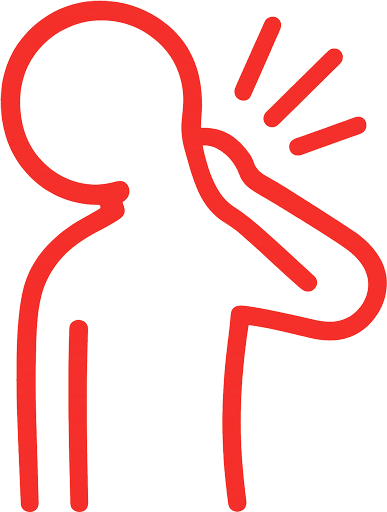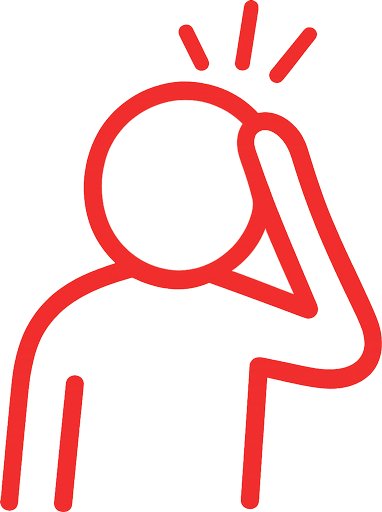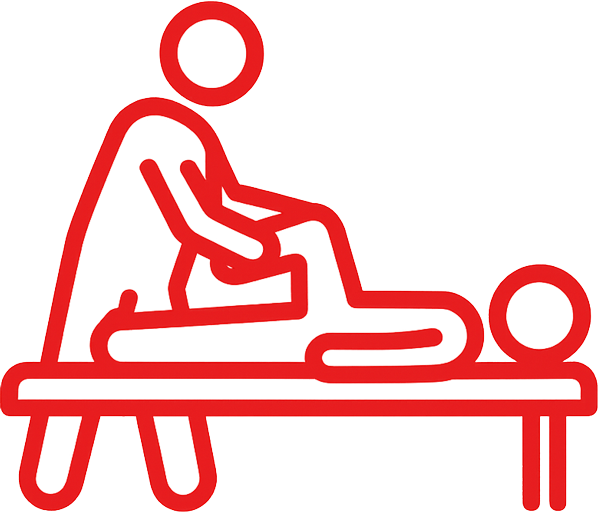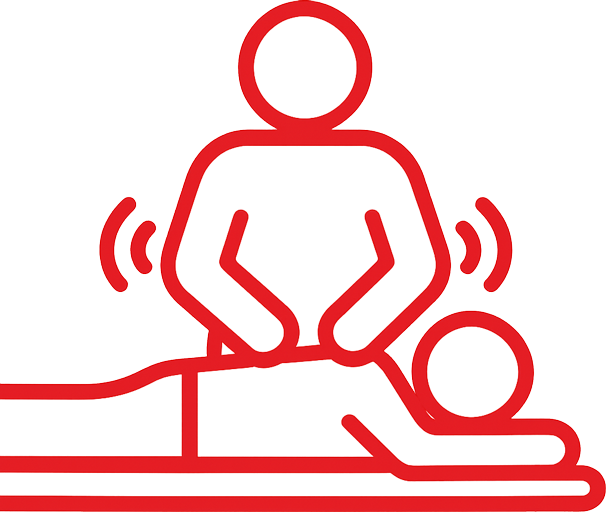Herniated Disc Treatment in St. Paul, Minnesota
Get lasting relief from herniated, bulging, and slipped discs without surgery
Non-Surgical Herniated Disc Treatment
A herniated disc (also called a slipped disc or bulging disc) is one of the most common causes of back pain and sciatica. At Twin Cities Chiropractic, Dr. Scot Sorum specializes in treating herniated discs naturally using advanced non-surgical techniques. With 25 years of experience, Dr. Sorum has helped thousands of patients avoid surgery and find lasting relief from disc-related pain through comprehensive, conservative treatment approaches.

What is a Herniated Disc?
Spinal discs are the cushions between your vertebrae that act as shock absorbers and allow smooth movement of the spine:
Disc Anatomy

Annulus Fibrosus
Tough outer ring of cartilage

Nucleus Pulposus
Soft, gel-like center

Function
Cushioning, shock absorption, and spinal flexibility
Types of Disc Problems

Bulging Disc
Disc extends beyond normal boundaries but outer ring remains intact

Herniated Disc
Outer ring tears and inner material leaks out

Ruptured Disc
Complete tear allowing nucleus material to escape

Degenerative Disc Disease
Age-related disc deterioration and height loss
Common Causes
Age-related Wear
Natural degeneration over time
Sudden Injury
Lifting, twisting, or trauma
Repetitive Stress
Repeated bending, lifting, or poor posture
Genetic Factors
Family history of disc problems
Lifestyle Factors
Smoking, obesity, sedentary lifestyle
Recognizing Herniated Disc Symptoms
Location-Specific Symptoms
Lumbar (Lower Back) Herniated Disc

Lower Back Pain
Sharp or aching pain in lumbar region

Sciatica
Pain radiating down buttock and leg

Leg Numbness or Tingling
In specific nerve distribution patterns

Leg Weakness
Difficulty lifting foot or toes

Muscle Spasms
Protective muscle contractions
Cervical (Neck) Herniated Disc

Neck Pain
Localized cervical spine discomfort

Arm Pain
Radiating pain down shoulder and arm

Hand Numbness
Tingling in fingers and hand

Arm Weakness
Difficulty with grip strength

Headaches
From cervical nerve irritation
General Symptoms

Pain that worsens with Sitting
Increased disc pressure

Pain relief when Walking
Reduced disc pressure

Coughing or Sneezing Pain
Sudden pressure increase

Morning Stiffness
Overnight disc swelling

Activity Limitations
Reduced ability to perform daily tasks
Advanced Non-Surgical Disc Treatment
Comprehensive Evaluation
Detailed pain and symptom history with Dr. Sorum
Physical examination including neurological testing
Orthopedic tests to confirm disc involvement
Range of motion and strength assessment
Review of MRI or CT scans when available
Identification of specific disc level and severity
Treatment Options
Spinal Decompression Therapy
Non-Surgical Decompression
FDA-approved treatment for disc problems
Negative Pressure Creation
Allows disc material to retract
Nutrient Flow Improvement
Promotes natural disc healing
Pain Relief
Reduces pressure on compressed nerves
Chiropractic Care
Specific Adjustments
Gentle techniques for disc conditions
Flexion-distraction
Specialized technique for disc herniation
Cox Techniques
Gentle spinal manipulation for disc problems
Advanced Therapies

Physical Therapy
Strengthen supporting muscles and improve flexibility

Massage Therapy
Joy Vang's therapeutic massage reduces muscle tension and inflammation

Postural Rehabilitaion
Address contributing factors
Advanced Technology for Disc Healing
How Spinal Decompression Works
Spinal decompression creates negative pressure within the disc, which:
Retracts Herniated Material
Pulls disc material away from nerves
Increases Disc Height
Restores proper spacing between vertebrae
Improves Circulation
Brings healing nutrients to damaged discs
Reduces Inflammation
Decreases swelling around affected nerves
Promotes Healing
Stimulates natural repair processes
Treatment Protocol
Initial Phase
3-4 sessions per week for 4-6 weeks
Session Duration
20-30 minutes per treatment
Gradual Progression
Increasing decompression force as tolerated
Monitoring Progress
Regular assessment and plan adjustments
Maintenance Phase
Reduced frequency as symptoms improve
Success Rates
86% Improvement
in patients with disc herniation
Significant Pain Reduction
in majority of cases
Avoided Surgery
in many patients who were surgical candidates
Long-term Relief
with proper maintenance and lifestyle changes
Targeted Treatment for Different Disc Conditions
Acute Disc Herniation

Immediate Decompression
Reduce disc pressure and nerve compression

Pain Management
Natural methods to control acute symptoms

Activity Modification
Positions and movements that promote healing

Anti-inflammatory Protocols
Reduce swelling and inflammation
Chronic Disc Problems

Comprehensive Rehabilitation
Long-term approach to disc health

Strengthening Programs
Build support for damaged discs

Lifestyle Modifications
Address contributing factors

Maintenance Care
Prevent future disc problems
Multiple Level Disc Disease

Comprehensive Spinal Care
Address entire spine health

Segmental Treatment
Target each affected disc level

Global Strengthening
Improve overall spinal stability

Long-term Management
Prevent progression of degeneration
Post-Surgical Disc Problems
Failed Back Surgery Syndrome
Treatment for persistent symptoms
Adjacent Segment Disease
Address problems above/below fusion
Scar Tissue Management
Reduce adhesions affecting function
Restoration Programs
Improve function after surgery
Protecting Your Discs Long-Term
Lifestyle Modifications

Proper LiftingTechniques
Squat lifting, avoid twisting

Weight Management
Reduce pressure on spinal discs

Smoking Cessation
Improve disc nutrition and healing

Regular Exercise
Maintain disc health through movement
Ergonomic Improvements

Workplace Setup
Proper chair, desk height, monitor position

Driving Posture
Seat position, lumbar support, frequent breaks

Sleep Environment
Supportive mattress, proper pillow placement

Daily Activities
Safe body mechanics for all tasks
Exercise and Strengthening

Core Strengthening
Support spine with strong abdominal muscles

Back Muscle Exercises
Strengthen erector spinae and multifidus

Flexibility Training
Maintain range of motion and prevent stiffness

Low-impact Activities
Walking, swimming, cycling for disc health
Early Treatment Prevents Permanent Damage
Seek Immediate Treatment If
Severe back or neck pain with leg or arm symptoms
Numbness, tingling, or weakness in extremities
Pain that interferes with sleep or daily activities
Symptoms persisting more than a few days
Progressive worsening of symptoms
Bowel or bladder dysfunction (emergency)
Benefits of Conservative Treatment
Avoid Surgery
90% of disc herniations heal without surgery
Natural Healing
Allow body's natural repair processes to work
Preserve Anatomy
Maintain normal spinal structure
Lower Risk
No surgical complications or recovery time
Cost Effective
Less expensive than surgical interventions
25 Years of Non-Surgical Disc Treatment Expertise
Dr. Scot Sorum brings a quarter-century of experience treating herniated discs and spinal conditions to Twin Cities Chiropractic. As a Northwestern College of Chiropractic graduate who founded the practice in 2001, Dr. Sorum has successfully helped thousands of patients avoid surgery through advanced conservative care.
His Comprehensive Approach includes

Advanced Diagnostic Skills
Accurately identifying disc problems and severity

Multiple Treatment Techniques
Tailored to specific disc conditions

State-of-the-art Equipment
Including spinal decompression technology

Surgery Avoidance Focus
Helping patients heal naturally when possible
Leading Non-Surgical Disc Treatment
Experienced Doctor

Dr. Sorum
25 years treating disc conditions and spinal problems

Thousands
of successful disc patients treated

Specialized Expertise
in non-surgical disc rehabilitation

High Success Rates
helping patients avoid surgery
Advanced Technology

Spinal Decompression Equipment
FDA-approved technology for disc treatment

Comprehensive Treatment Options
Multiple approaches for disc problems

Modern Facility
State-of-the-art equipment and comfortable environment

Integrated Care
Combining decompression with chiropractic and massage
Proven Results
86% Success Rate
with disc decompression therapy
Pateint Testimonials
documenting avoided surgeries
Long-term Relief
Addressing root causes of disc problems
Functional Restoration
Getting patients back to normal activities
Common Herniated Disc Treatment Questions
Yes, many herniated discs can heal naturally with proper treatment. The body has remarkable ability to reabsorb herniated disc material over time.
Most herniated discs (about 90%) respond well to conservative treatment. Surgery is typically only considered when conservative care fails and there are serious neurological symptoms.
Healing time varies depending on severity and location. Some patients see improvement within weeks, while others may take several months for complete healing.
Yes, spinal decompression is very safe when performed by trained professionals like Dr. Sorum. It’s FDA-approved and has an excellent safety record.
Certain exercises can be very beneficial for disc healing, while others may be harmful. Dr. Sorum will guide you on appropriate activities for your specific condition.
While we can’t guarantee prevention of future problems, proper treatment and lifestyle modifications significantly reduce the risk of recurrence.
Severe Disc Pain? We Can Help Today
Same-Day Appointments Available
Acute Disc Herniation
with severe symptoms
New Onset
leg or arm pain from disc problems
Worsening Disc Symptoms
not responding to home care
Work or Auto Accident
disc injuries
Emergency Situations - Seek Immediate Medical Care
Loss of bladder or bowel control (cauda equina syndrome)
Progressive weakness in arms or legs
Numbness in genital area
Severe pain in both arms or legs
Inability to move affected extremity
Comprehensive Herniated Disc Treatment
Dr. Sorum’s herniated disc treatment is enhanced by our integrated approach:

Spinal Decompression
Advanced technology specifically for disc problems

Chiropractic Adjustments
Gentle techniques appropriate for disc conditions

Physical Therapy
Strengthen supporting muscles and improve flexibility

Massage Therapy
Joy Vang's therapeutic massage reduces muscle tension and inflammation

Lifestyle Counseling
Address contributing factors and prevention strategies
Comprehensive Disc and Spine Care

Sciatica
Often caused by lumbar disc herniation

Degenerative Disc Disease
Age-related disc deterioration

Spinal Stenosis
Often occurs with disc problems

Pinched Nerves
Nerve compression from disc material

Chronic Back Pain
Often related to disc problems

Neck Pain
Can be caused by cervical disc herniation
Protecting Your Discs Every Day
Daily Activities
Lifting Safely
Squat down, keep back straight, avoid twisting
Sitting Properly
Use lumbar support, take frequent breaks
Sleeping Position
Side sleeping with pillow between knees
Getting Up
Roll to side before sitting up from lying down
Exercise Guidelines

Walking
Excellent low-impact exercise for disc health

Swimming
Provides exercise without spinal loading

Avoid High Impact
Running, jumping may aggravate disc problems

Core Strengthening
Support spine with strong abdominal muscles
Work and Travel

Ergonomic Workstation
Proper chair, monitor height, keyboard position

Frequent Position Changes
Stand and move every 30 minutes

Travel Tips
Use lumbar support, stop frequently on long drives

Stress Management
Reduce tension that can worsen disc problems
State-of-the-Art Equipment for Disc Healing
Computerized Spinal Decompression

FDA-approved Technology
Proven safe and effective for disc problems

Precise Computer Control
Customized treatment protocols

Real-time Monitoring
Continuous adjustment for optimal results

Patient Comfort Features
Designed for relaxation during treatment
Treatment Advantages

Non-invasive
No surgery, injections, or medications required

Pain Free
Most patients find treatment comfortable and relaxing

Outpatient
No hospital stay or recovery time needed

Proven Results
High success rates documented in clinical studies
